In stock
$27.28
Overview
USB Smart Card Access Reader
| SKU | GSR202 |
|---|---|
| EAN | 0881317508614 |
| Manufacturer | iogear |
| Availability | Y |
| Storage | |
|---|---|
| Internal | No |
| Performance | |
| Internal | No |
| Product colour | Black |
| Compatible operating systems | Windows XP, Vista, 7 (32-bit/64-bit) Linux Redhat, Ubuntu, Fedora |
| Ports & interfaces | |
| USB 3.2 Gen 1 (3.1 Gen 1) ports quantity | 0 |
| Interface | USB 2.0 |
| Cable length | 59.1" (1.5 m) |
| Features | |
| Product colour | Black |
| Colour | |
| Product colour | Black |
| Weight & dimensions | |
|---|---|
| Dimensions (WxDxH) | 1.69 x 0.591 x 0.709" (43 x 15 x 18 mm) |
| Weight | 3.21 oz (91 g) |
| Cable length | 59.1" (1.5 m) |
| System requirements | |
| Compatible operating systems | Windows XP, Vista, 7 (32-bit/64-bit) Linux Redhat, Ubuntu, Fedora |
| Other features | |
| Compatible operating systems | Windows XP, Vista, 7 (32-bit/64-bit) Linux Redhat, Ubuntu, Fedora |
| Dimensions (WxDxH) | 1.69 x 0.591 x 0.709" (43 x 15 x 18 mm) |
| Technical details | |
| Interface | USB 2.0 |
| Harmonized System (HS) code | 84719000 |
| Logistics data | |
| Harmonized System (HS) code | 84719000 |
| Product |
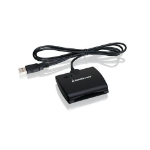
Bestseller
iogear GSR202 card reader USB 2.0 Black
$27.28
|
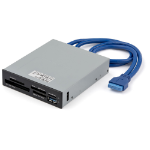
Recommended
StarTech.com 35FCREADBU3 card reader I...
$35.40
|
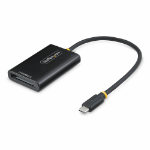 StarTech.com 1B-USB-C-CFE-ADAPTER card...
StarTech.com 1B-USB-C-CFE-ADAPTER card...
$25.47
|
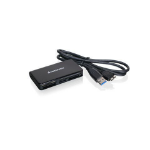 iogear GFR381 card reader USB 3.2 Gen...
iogear GFR381 card reader USB 3.2 Gen...
$36.50
|
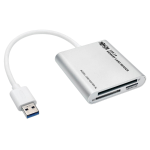
Popular
Tripp Lite U352-000-MD-AL card reader...
$28.01
|

Hot Product
StarTech.com FCREADU3C card reader USB...
$35.28
|
|---|---|---|---|---|---|---|
| SKU |
GSR202
|
35FCREADBU3
|
1B-USB-C-CFE-ADAPTER
|
GFR381
|
U352-000-MD-AL
|
FCREADU3C
|
| Manufacturer |
iogear
|
StarTech.com
|
StarTech.com
|
iogear
|
Tripp Lite
|
StarTech.com
|